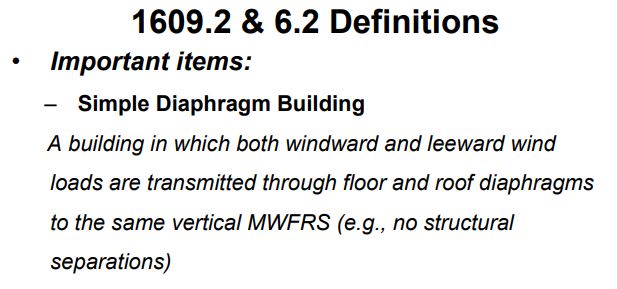Would a fully-enclosed Pre-Engineered Metal Building (PEMB), with continuous wall sheathing and roof, meet the ASCE 7 definition of "Simple Diaphragm Building"?
ASCE 7-16 definition is as follows:
"BUILDING, SIMPLE DIAPHRAGM: A building in which both windward and leeward wind loads are transmitted by roof and vertically spanning wall assemblies, through continuous roof and floor diaphragms, to the MWFRS."
If the roof/wall panel and purlin/girt assemblies are idealized as flexible diaphragms, does a PEMB meet the criteria for the simplified procedures in Chapters 27/28? The potential hang up in the code language is "vertically spanning" wall assemblies. The panels span vertically, but transmit load to the horizontal girts which then load the building frames. Does this disqualify the metal building system from the Part 2 provisions of ASCE 7, or no?
ASCE 7-16 definition is as follows:
"BUILDING, SIMPLE DIAPHRAGM: A building in which both windward and leeward wind loads are transmitted by roof and vertically spanning wall assemblies, through continuous roof and floor diaphragms, to the MWFRS."
If the roof/wall panel and purlin/girt assemblies are idealized as flexible diaphragms, does a PEMB meet the criteria for the simplified procedures in Chapters 27/28? The potential hang up in the code language is "vertically spanning" wall assemblies. The panels span vertically, but transmit load to the horizontal girts which then load the building frames. Does this disqualify the metal building system from the Part 2 provisions of ASCE 7, or no?



